How young refugees rebuild their lives in new countries – and how we can all learn from their stories
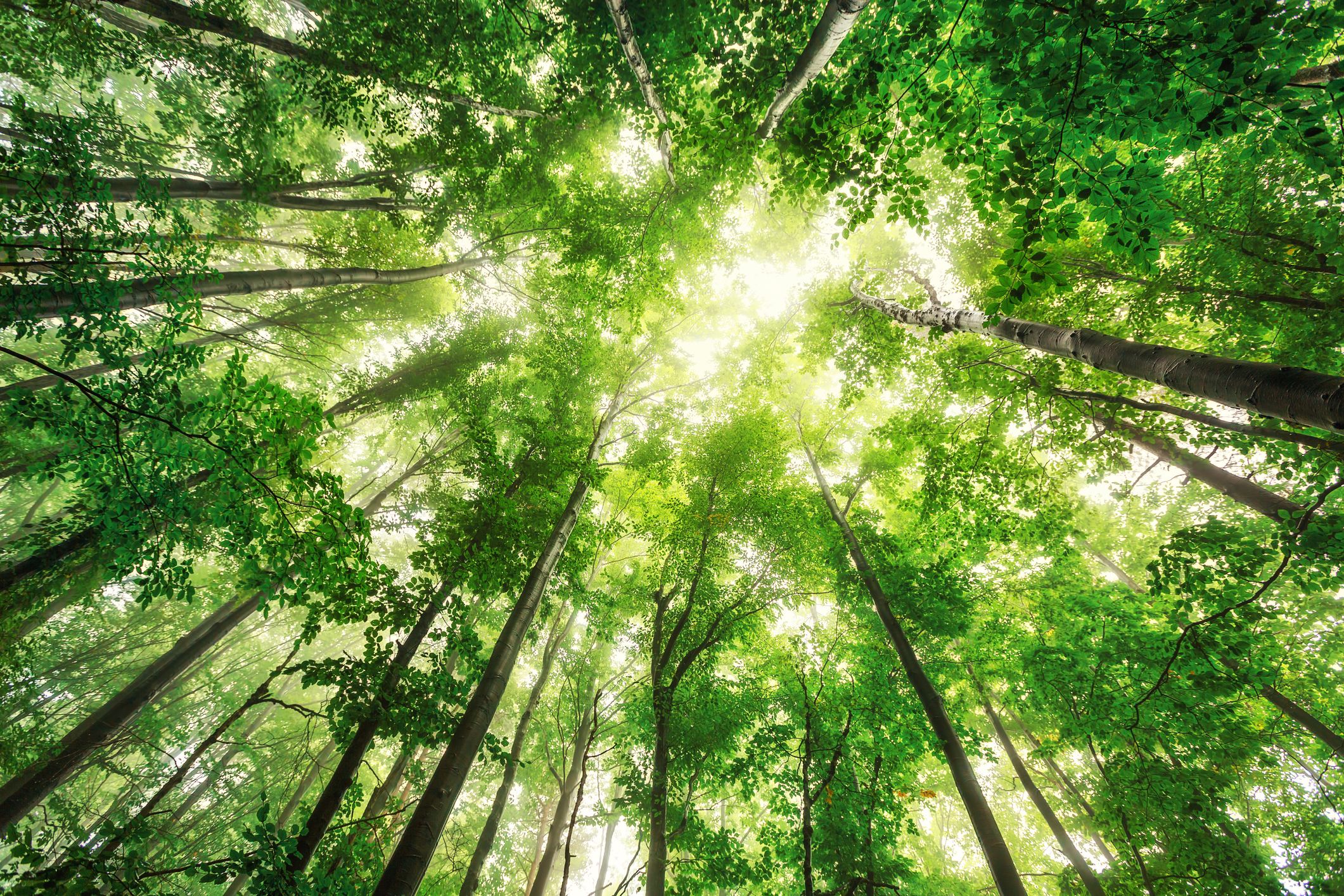
S
ome of the trees are very old and broken
they lean on other trees and they hold on
for me it’s absolutely amazing,
it’s not just human beings that can help each other,
look at nature, the trees are encouraging, holding each other’s weight
it’s as if they were saying
“Yes, don’t worry, I’m holding you, we’re not finished here.”
These words were written by one young refugee, Elham*, as he walked in the park and reflected on the concept of community. For him, spending time in the natural environment is something that’s more than a walk or exercise, it’s a place where support and encouragement can be found, inspired by what he sees around him. He explains:
“For me, when I look in the tree, listen to the river, you know? Following that rhythm, that gave me more, be more “think positive” when I’m stressful about my daily life, I just go to this rhythm, to losing myself, just continuing in nature…”
A photograph taken by Elham* as he walked in the park and looked up at the trees (source: Drawing Together), set against a water soundscape. This soundscape was recorded by Laurie Pitt, a musician working with the Drawing Together project in Glasgow, as part of a group social trip that the young people made to Loch Lomond.
As refugees start to rebuild their lives in new places, support, in its many forms, is essential. Some support, like showing respect, empathy and understanding, is universal, and some support, such as safe, warm housing, is essential for day-to-day life. In amongst this, it is important to remember that everyone’s story is their own, and it is individualised support that will enable people to best integrate into their new countries.
Christine and Hamid, two young refugees who are now settled in Scotland and are Ambassadors for the Drawing Together project, a research project that works alongside young refugees living in Scotland, Finland and Norway, emphasise this need for tailored support:
“The first thing that refugees need is a place where they can be happy and safe without stress. Young refugees need to receive professional support from experts showing full respect and paying attention to what a young refugee likes, rather than just assuming what is best for everyone as a group. They should be seen as individuals and their needs should be met individually.”
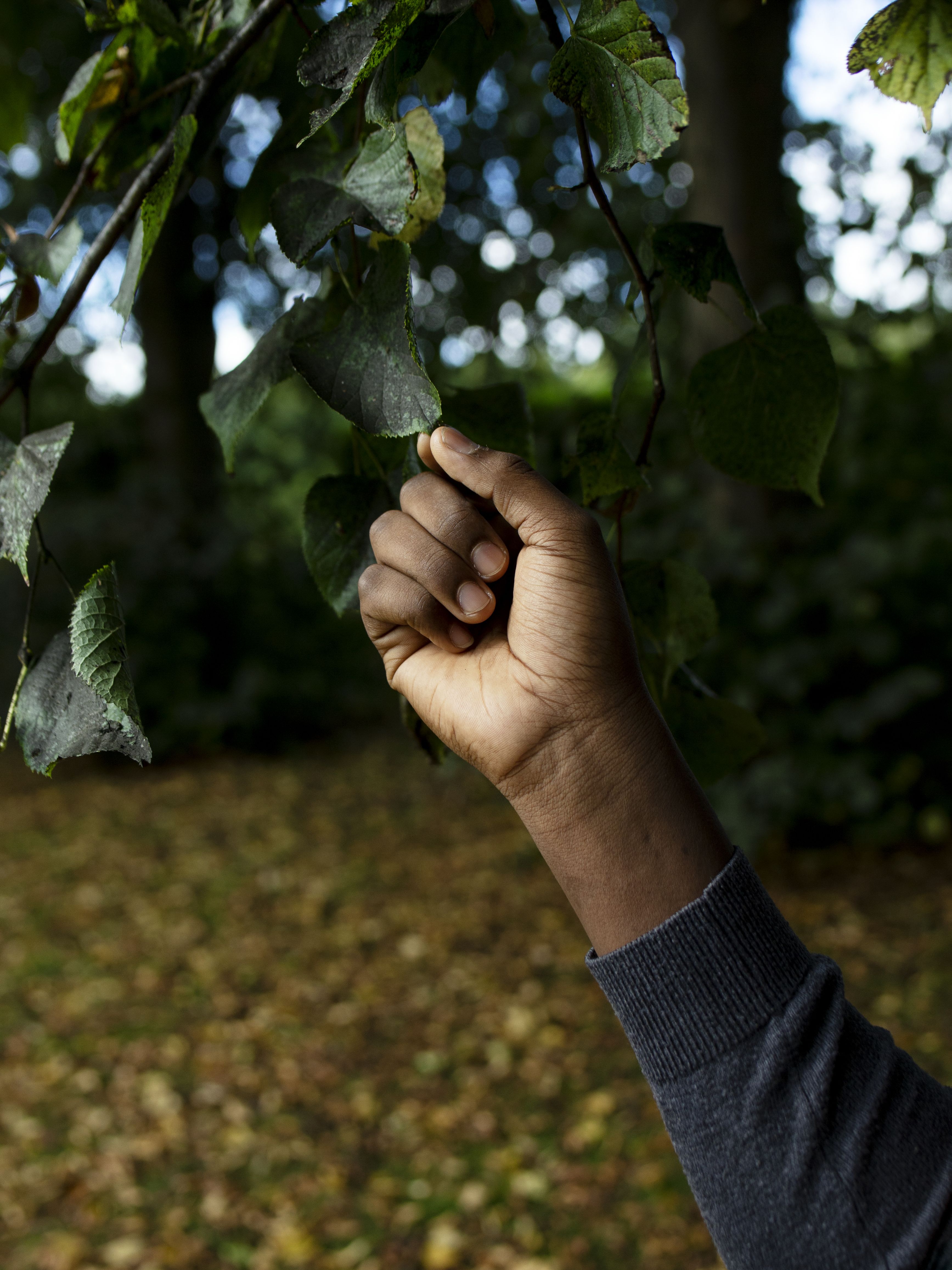
Here, one of the participants shows how the ‘aliveness’ around him reflects a ‘life coming back to life’, where both a sense of gratitude can be expressed, and life can be rebuilt. (Source: Emily Macinnes)
Here, one of the participants shows how the ‘aliveness’ around him reflects a ‘life coming back to life’, where both a sense of gratitude can be expressed, and life can be rebuilt (Source: Emily Macinnes).
Many of the people – professionals, volunteers and community members - who support young refugees have also come to understand that integration isn’t a linear ‘one size fits all’ process; it is multi-layered. When young people arrive in a new country, having already been forced to leave their homes, they face a completely new set of challenges that many people take for granted.
Lorraine Ward, a social worker who has worked with the children and families social work department in Glasgow for over 25 years, has seen this first hand:
“Young asylum seekers and refugees must often learn a new language, adjust to different cultural norms, navigate an asylum process, all as young adults… Their lives have been disrupted, so understandably they need help to continue to re-build them. In my experience, asylum seekers and refugees do this more successfully when they have developed secure relationships and support networks in their new country.”
It is these networks and relationships that are the focus of the international Drawing Together project. Through a series of art workshops and interviews, the project explores how young people rebuild their everyday lives in new countries, over time.
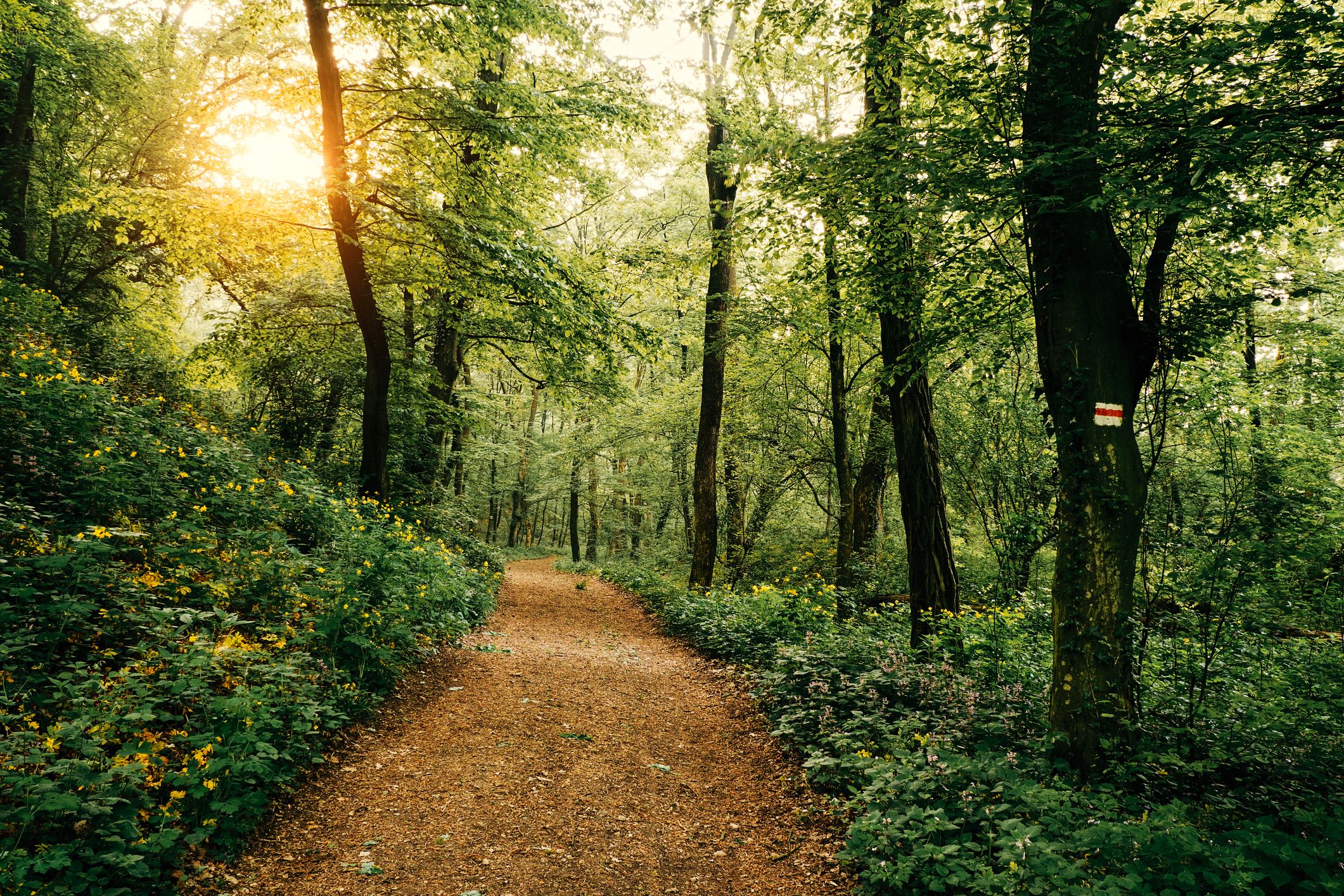
Understanding how young refugees rebuild their lives
Drawing Together is a three-year research project funded by NordForsk, an organisation that provides funding to strengthen Nordic research. The project works alongside young refugees living in Scotland, Finland and Norway to understand how young people build full and vibrant lives in their new countries, with a focus on mutuality, hospitality and reciprocity.
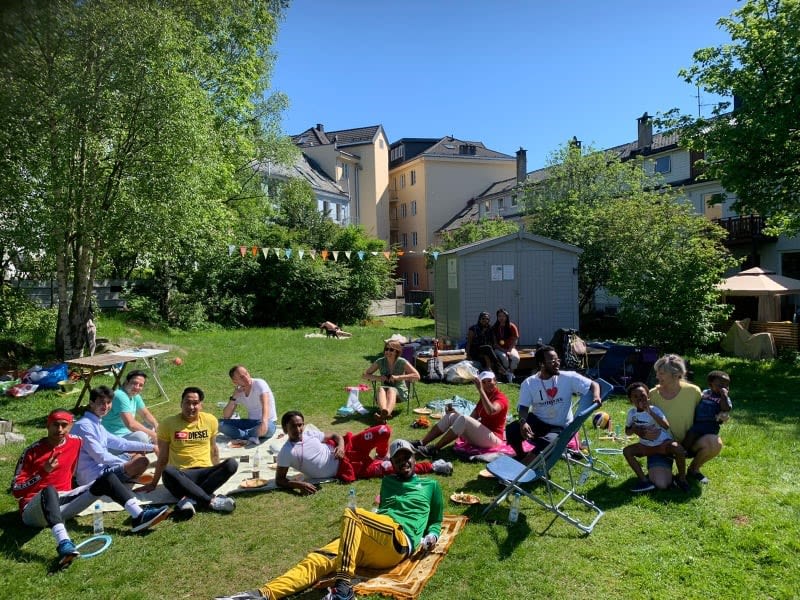
Drawing Together participants and team members in Norway meet in the park. (Source: Drawing Together)
Drawing Together participants and team members in Norway meet in the park (Source: Drawing Together)
CELCIS, the Centre for Excellence for Children’s Care and Protection, based at the University of Strathclyde, provides research support to the project’s Scottish team, which is led by the University of Bedfordshire’s Professor of Child Welfare Ravi KS Kohli, working in partnership with three other research centres in Norway and Finland: Tampere University, NORCE and the Migration Institute of Finland, and an associate partnership with Western Norway University of Applied Sciences.
53 young people - 17 men and women in Finland, 17 in Norway and 19 in Scotland (two of whom joined at a later stage) - are participating in the project, which began in 2020. Using visual art approaches including art workshops, photoshoots, film and interviews to learn more about the participant's lives, such as their social networks and what is important to them, the project is building a picture over time of what factors and elements matter in adjusting and establishing their lives in new places. Alongside this the participants can nominate a person from their network to be interviewed with them to further explore and identify how people in Scotland, Finland and Norway are embracing young refugees in their countries.
Where young people have been successful in securing permission to settle in their new countries many public authorities fade from their lives and new social networks are built. Ordinary life emerges once again, as they develop sustaining relationships with other people, and add to the life of their new country.
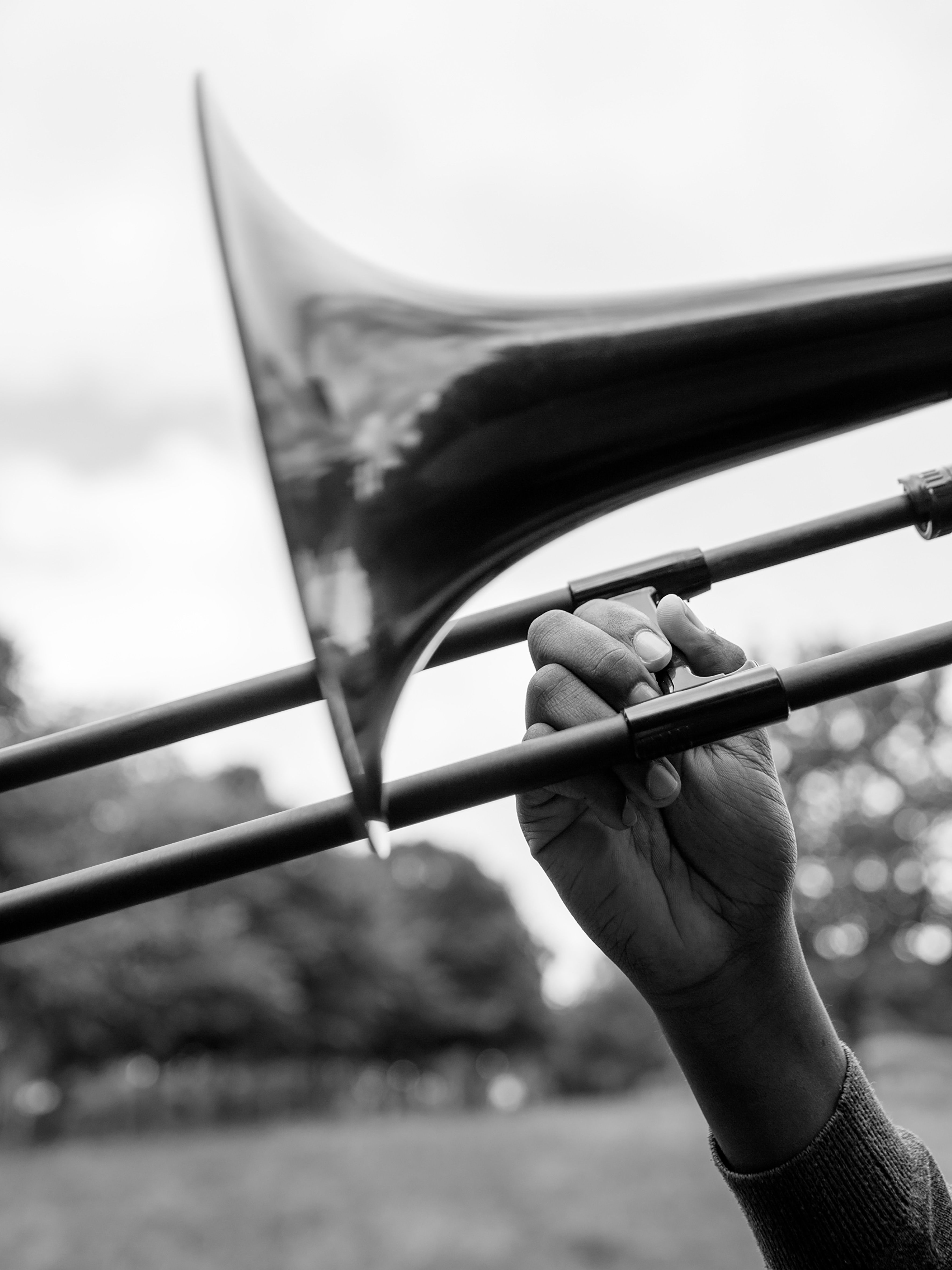
As the participants reconstruct life in a new country, it is important to show how their talents and hard work connect to relational wellbeing. In this photograph, one of the young people shows his commitment to playing the trombone and creating music. (Source: Emily Macinnes)
As the participants reconstruct life in a new country, it is important to show how their talents and hard work connect to relational wellbeing. In this photograph, one of the young people shows his commitment to playing the trombone and creating music (Source: Emily Macinnes)
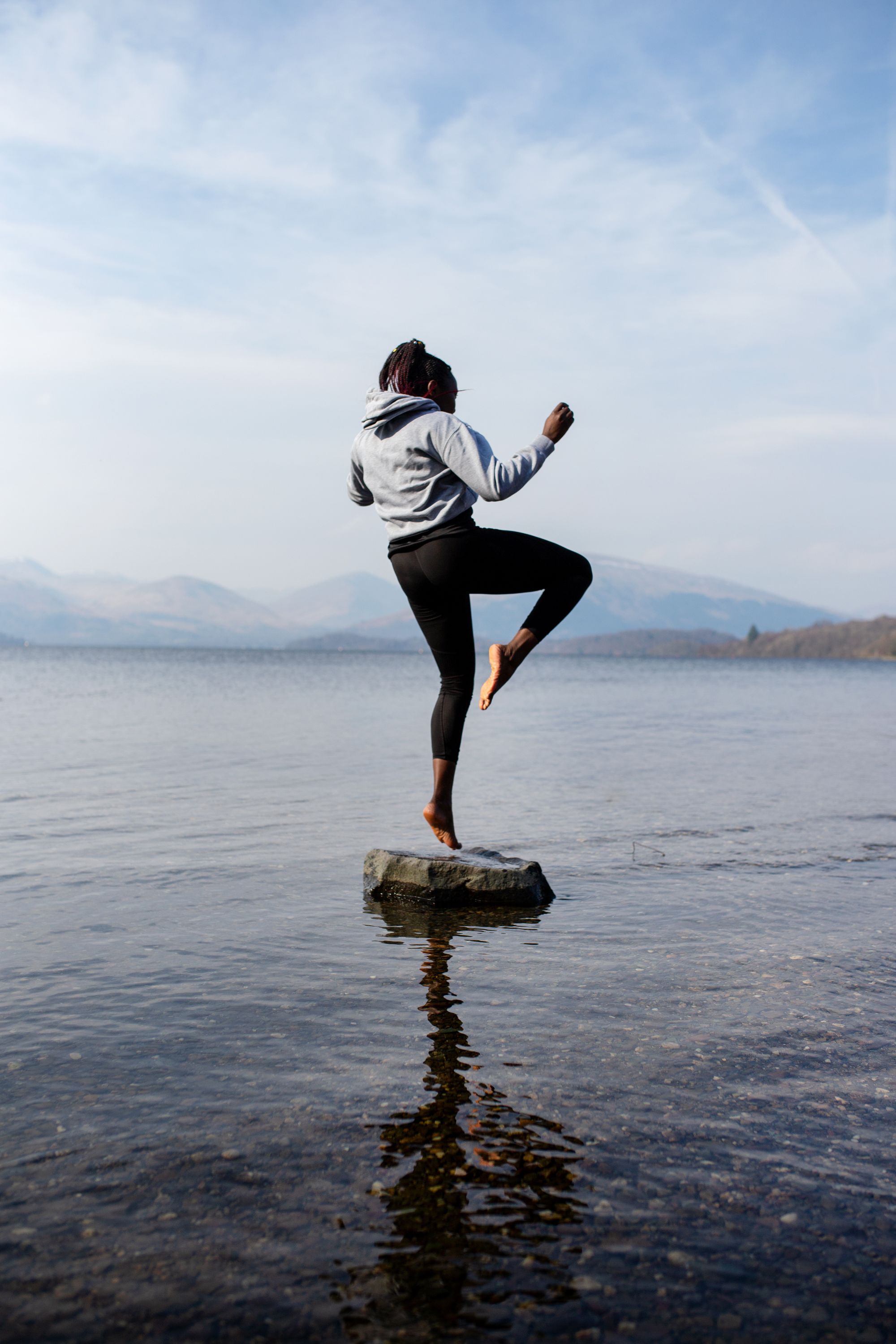
Balance and poise at Loch Lomond. (Source: Emily Macinnes)
Balance and poise at Loch Lomond. (Source: Emily Macinnes)
For each participant, there is a chance to think about their current situation and how it connects to both their past (their childhood), and their future (their hopes and aspirations). They do this in various ways, such as sharing timelines of their lives that focus on their wellbeing and talking and drawing maps about important people in their family, their community, their friendship networks, and their professional helpers.
As Professor Ravi KS Kohli, Drawing Together Project Lead explains:
“Our work in this project is built on the idea that integration is neither dramatic nor sudden. It is quiet, unremarkable, and made by communities living together within borders that seek to preserve and evolve their national identities.”
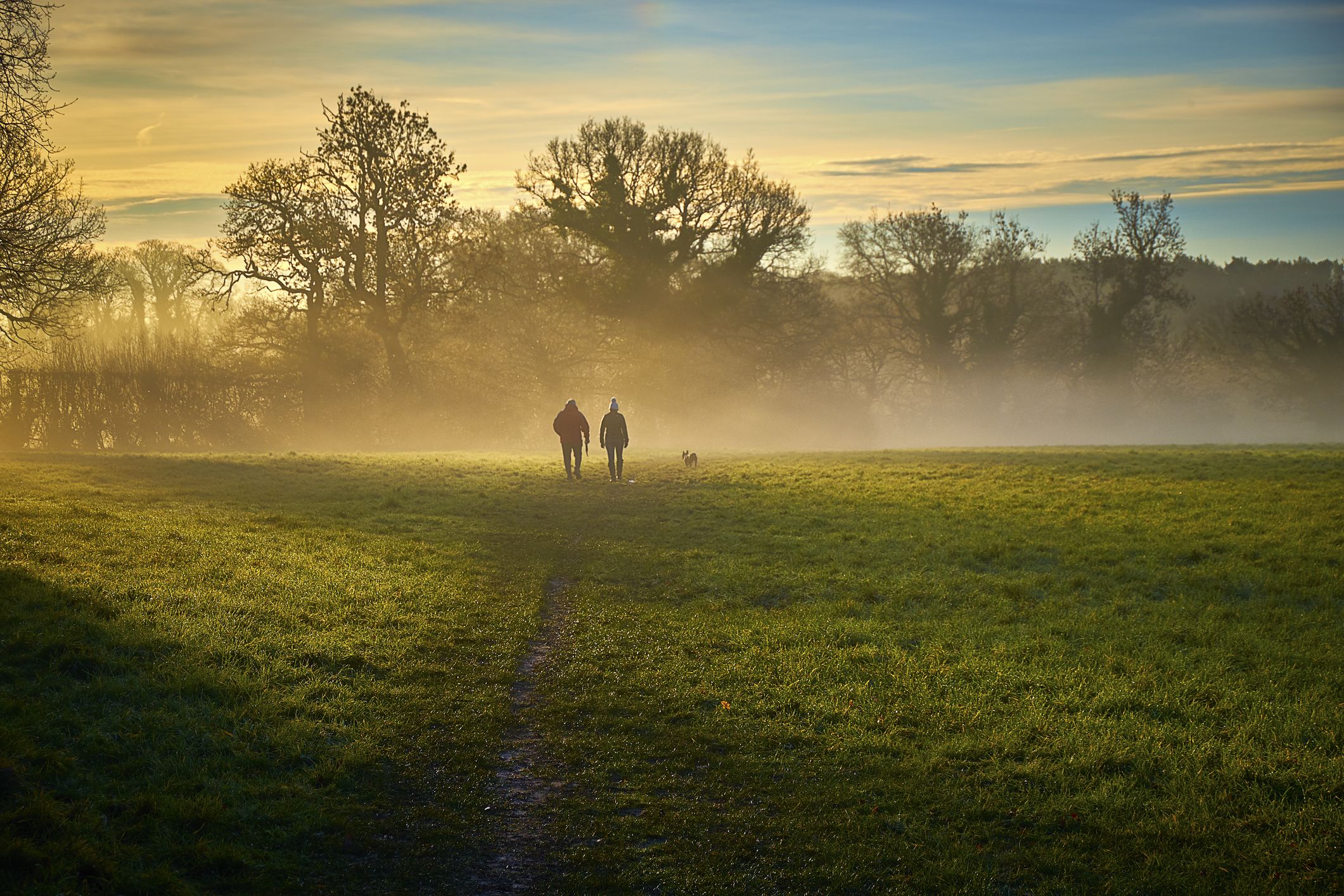
‘We like to be their light’ – the role of Drawing Together’s Ambassadors
As part of the project, six of the young people in Scotland, Finland and Norway act as Ambassadors, who are instrumental in building the bridge between the research team and the participants. Working alongside the research team, they help to identify any potential challenges that the participants might have that might affect how they feel about participating and check in with their fellow young people taking part to see how life is going for them.
They organise social events for participants to help them build relationships with each other that will hopefully last beyond the project – the selfies from meals out, activities and online get togethers reflect the connections, joy and positivity that now runs as a thread throughout the project.
“We like to be their light, and we could shine throughout their journey to indicate help and hope and to provide less stress and less loneliness in their journey… We have learned that each participant has a story to tell, and all the stories have been told in a variety of beautiful ways. Every participant is unique and everyone's story is their own.”
- Christine and Hamid, Ambassadors to the Drawing Together project
From early on the Ambassadors discussed what the potential impact and sustainability the Drawing Together project could generate, focusing on two questions: ‘What I am hoping to get out of this project?’ and ‘What do we hope this project can bring to the world?’ Love, relationships, understanding and inclusivity were amongst the most prominent reflections in their answers.
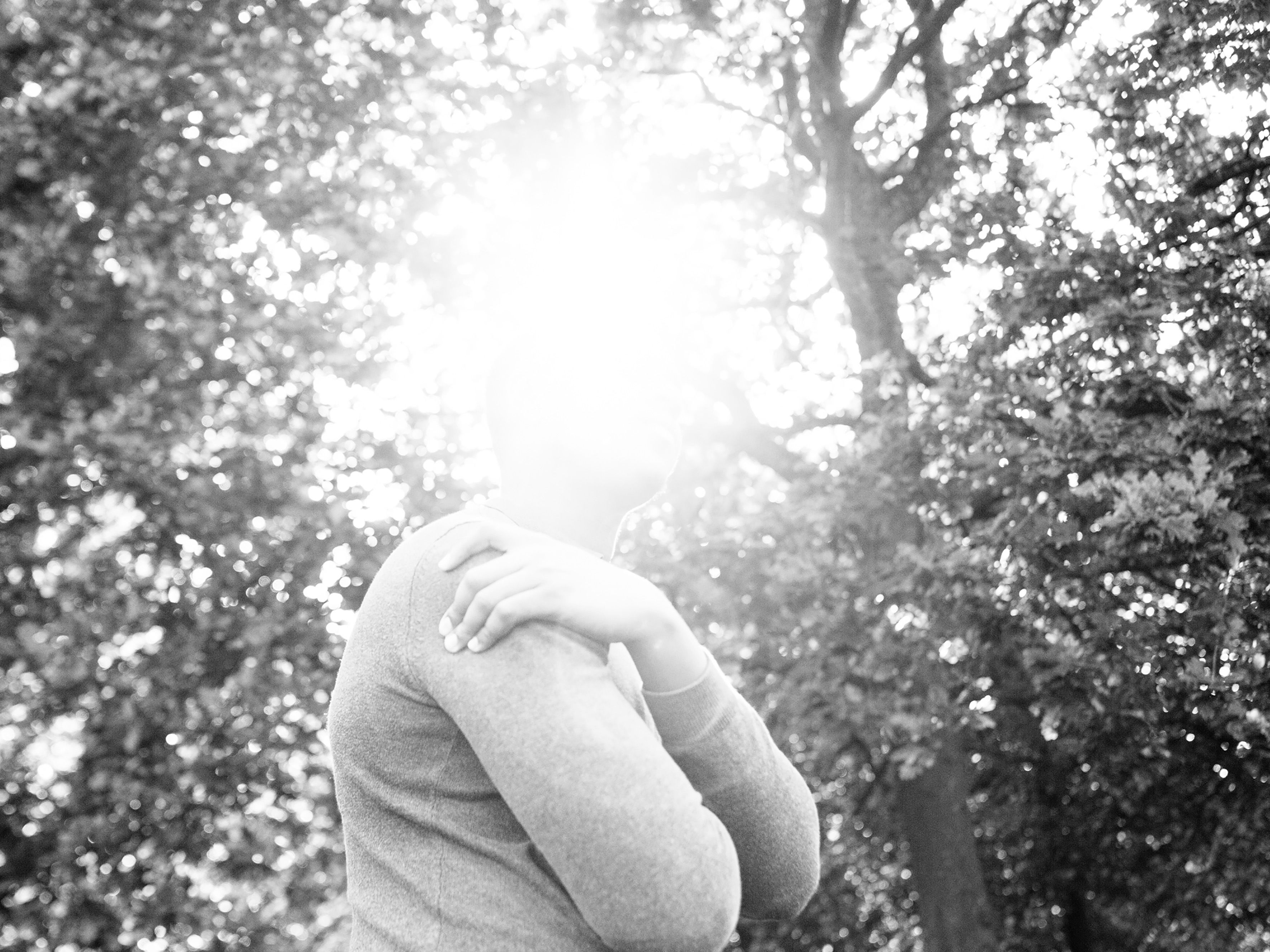
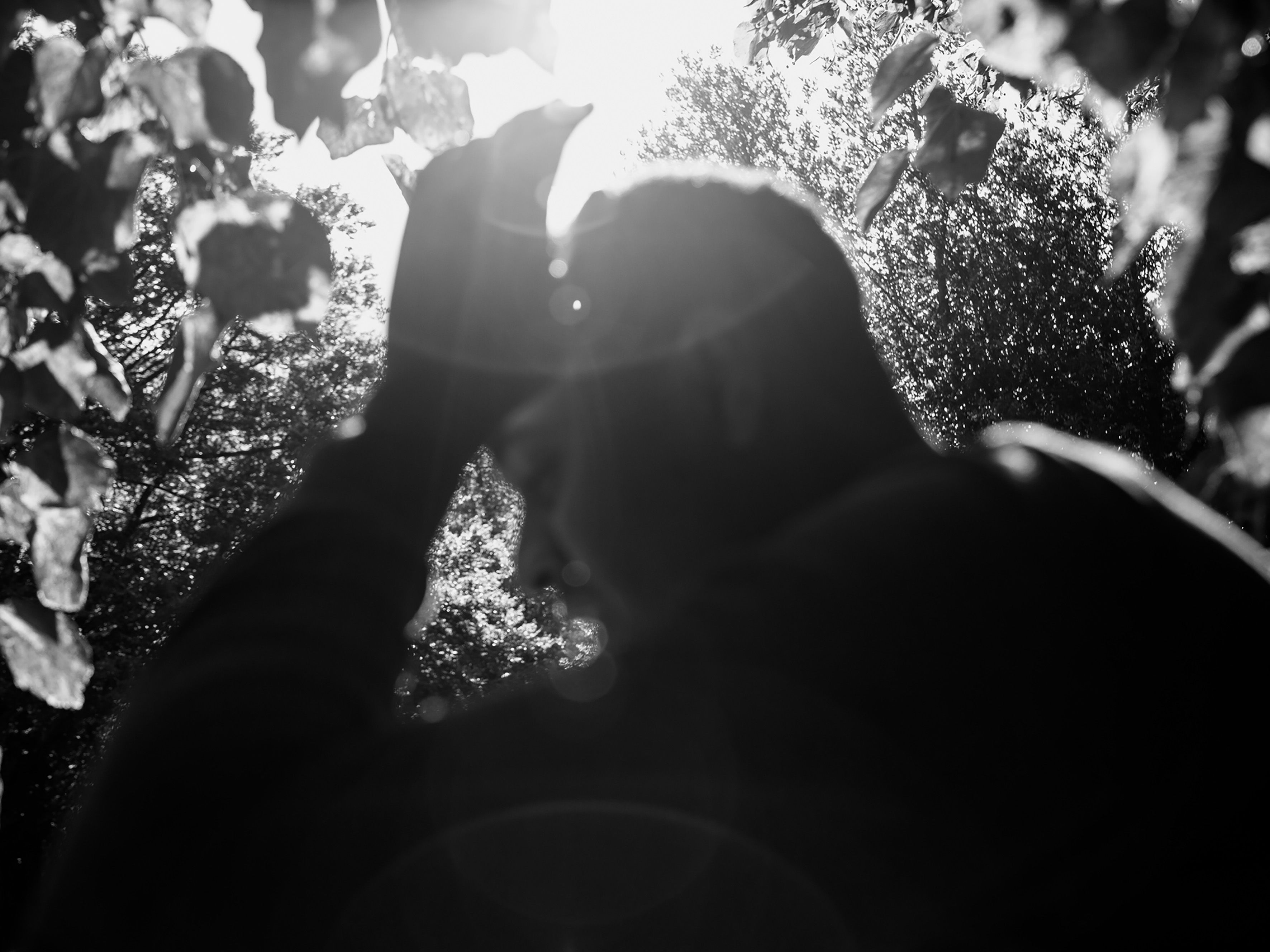
In these two photographs, one of the participants is in his local park in Glasgow – for him, the park is a place where he feels peaceful. It is part of his community, where he can pause, gain encouragement, and connect to the natural world around him. (Source: Emily Macinnes)
In these two photographs, one of the participants is in his local park in Glasgow – for him, the park is a place where he feels peaceful. It is part of his community, where he can pause, gain encouragement, and connect to the natural world around him. (Source: Emily Macinnes)
Take a look through some of the comments, thoughts and reflections that the young people shared in this reproduction of an online discussion board.
Creativity in shared spaces
Beyond words is the expression through art facilitated through the project with art therapists and visual artists working to help young refugees create objects and images about their networks and relationships.
This creative process for depicting and capturing this relational wellbeing is done in three ways: by asking the young people to share what relationships and connections they have and how they interact with others their day-to-day life; how they imagine that might look in the future, and to recall these from their lives before they left their country of origin. Their stories, images and objects are then brought together to see whether their relational wellbeing in the past, present and future is similar or different over time.
By doing this, the project hopes to be able to reflect how life flows after the unsettledness of asylum, in the quiet, unremarkable moments, as the young people become part of their new country’s diversity and communities.
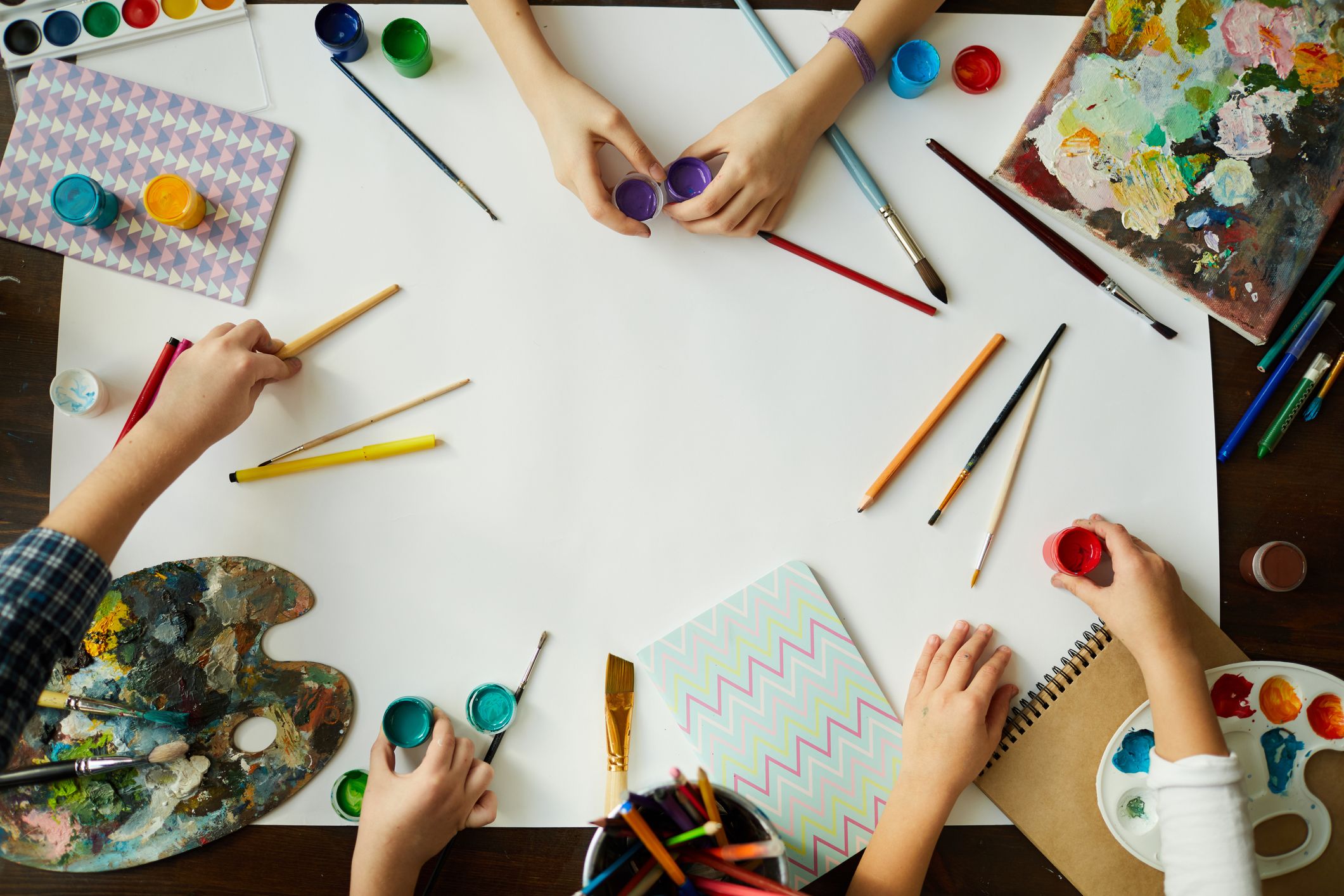
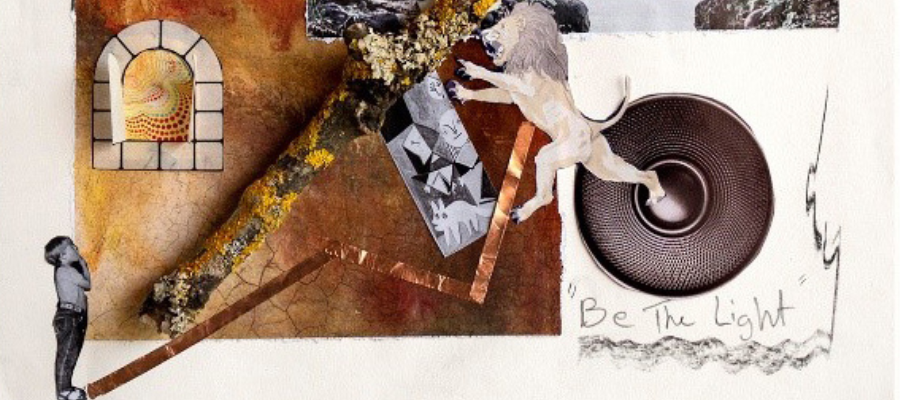
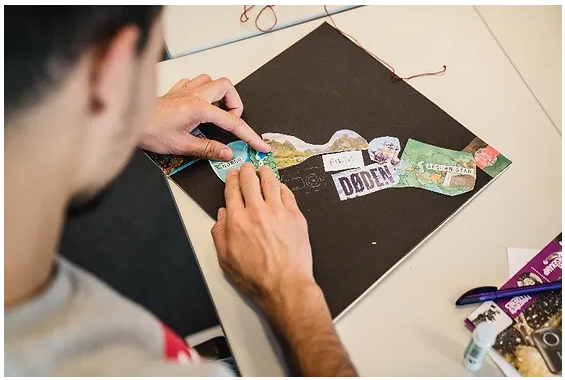
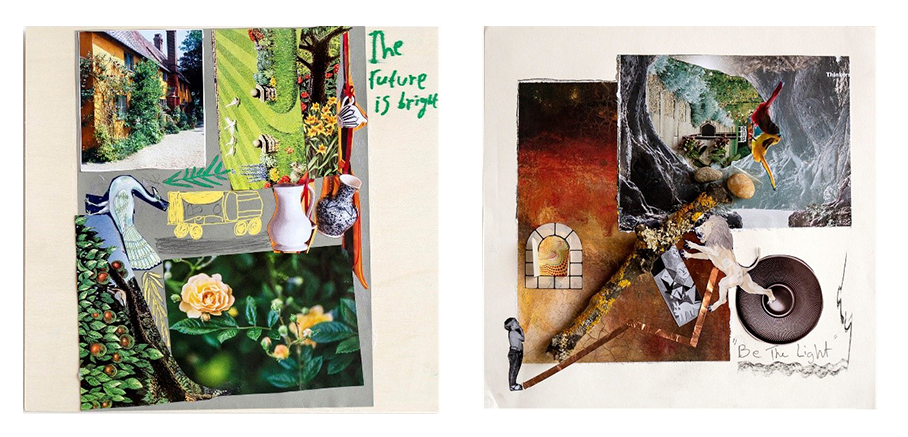

Photographs that capture the vibrancy, colour and outputs of the creative workshops. (Source: Drawing Together)
Photographs that capture the vibrancy, colour and outputs of the creative workshops. (Source: Drawing Together)

Photographs that capture the vibrancy, colour and outputs of the creative workshops. Click on the images to see them close up! (Source: Drawing Together)
Photographs that capture the vibrancy, colour and outputs of the creative workshops. Click on the images to see them close up! (Source: Drawing Together)

Photographs that capture the vibrancy, colour and outputs of the creative workshops. Click on the images to see them close up! (Source: Drawing Together)
Photographs that capture the vibrancy, colour and outputs of the creative workshops. Click on the images to see them close up! (Source: Drawing Together)
How creativity can help generate support
The ability to share thoughts, feelings, and making art helps in creating a safe and equal shared space for the everyone taking part. In a workshop in Scotland that looked at timelines around the young peoples’ childhood days, each participant was given a task to build a structure using miniature bricks and Play-Doh, whilst sat around a large communal table. What started off as an individual exercise soon became a collective one, and one that took on a new direction. The different models the group were making were beginning to be shaped to interact with one another.
When they spoke about this, the participants said they had been influenced by the crisis in Ukraine, with their models a response to that. They had created 3D model of an ecosystem of support that they felt refugees from Ukraine would need upon entering the UK, which included education services, housing, practical support, as well as a physical and metaphorical ‘bridge’ to carry them over troubled waters. Their first thought was how they can help others who are going through similar challenges to those that they have experienced. There’s something quite special about the shared experiences of young refugees and the power of how they are supporting each other as peers. Using creativity in this share space showed how such approaches as these can be used to help to raise up the most important and sensitive issues that society faces.
As the project reached its halfway point (December 2022), some of early overarching themes the young people are bringing to the fore were:
- happiness when in contact with their family and friends from home, at the life and relationships they are building, and the future that they are shaping
- gratitude for the opportunity to live and build a new life in a new country
- luck to have met supportive people on their way
- stability that housing, education and social networks provide
- vigilance of their personal, cultural and emotional safety and security
- trust and confidence developing in the relationships they are building with new people in their life, their community
- reciprocity as they give back or aim to give back to their family, friends, community and society who have helped them.
The hope for the Drawing Together project is to deliver clear messages to the people and services involved in refugees’ lives, to policymakers who set out the policy framework that underpins these services, as well as to the wider general public, about the support and networks that young refugees need when they move to a new country, but as well as that, the skills, knowledge and strength they bring to their new communities as they rebuild their lives:
“As a social worker, I have learned that enabling these young people to have spaces where they feel safe and valued by those around them provides the scaffolding for them to take their next steps towards living a happy and fulfilling life as effective citizens in Scotland their new home.”
- Lorraine Ward, social worker, Glasgow City Council families social work department
“We hope the project can make a positive impact by influencing the lives of refugees and those of decision makers. We hope the project succeeds and helps/touches the lives of other young people in many ways as it has helped us. For us, it has brought us close to our friends and got us thinking about a future where we feel safe, where we belong and are successful.”
- Christine and Hamid, Ambassadors to the Drawing Together project
*This name has been changed to protect the person’s identity
Published March 2023

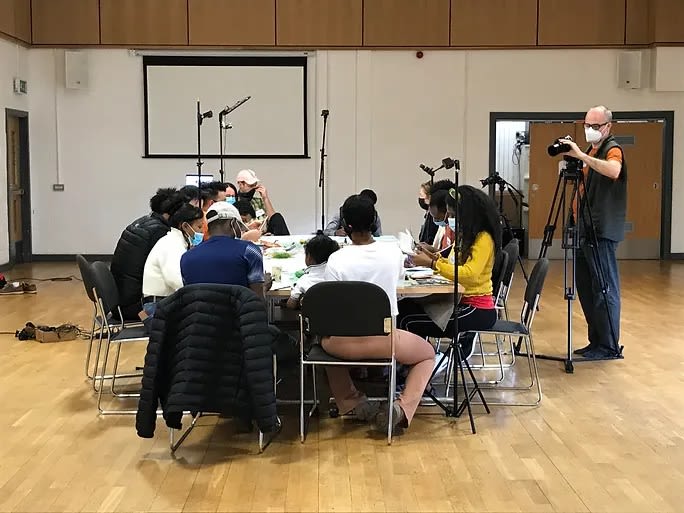
Scenes of the art workshops in Glasgow (Source: Drawing Together)
Scenes of the art workshops in Glasgow. (Source: Drawing Together)

Scenes of the art workshops in Glasgow (Source: Drawing Together)
Scenes of the art workshops in Glasgow (Source: Drawing Together)
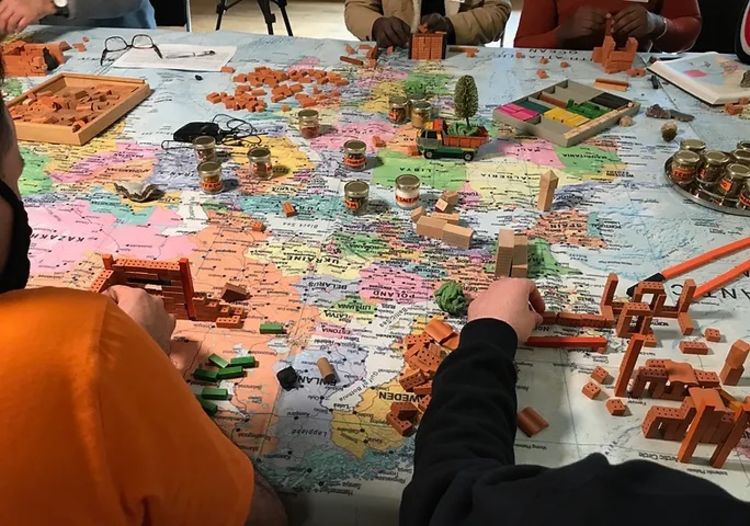
Scenes of the art workshops in Glasgow (Source: Drawing Together)
Scenes of the art workshops in Glasgow (Source: Drawing Together)
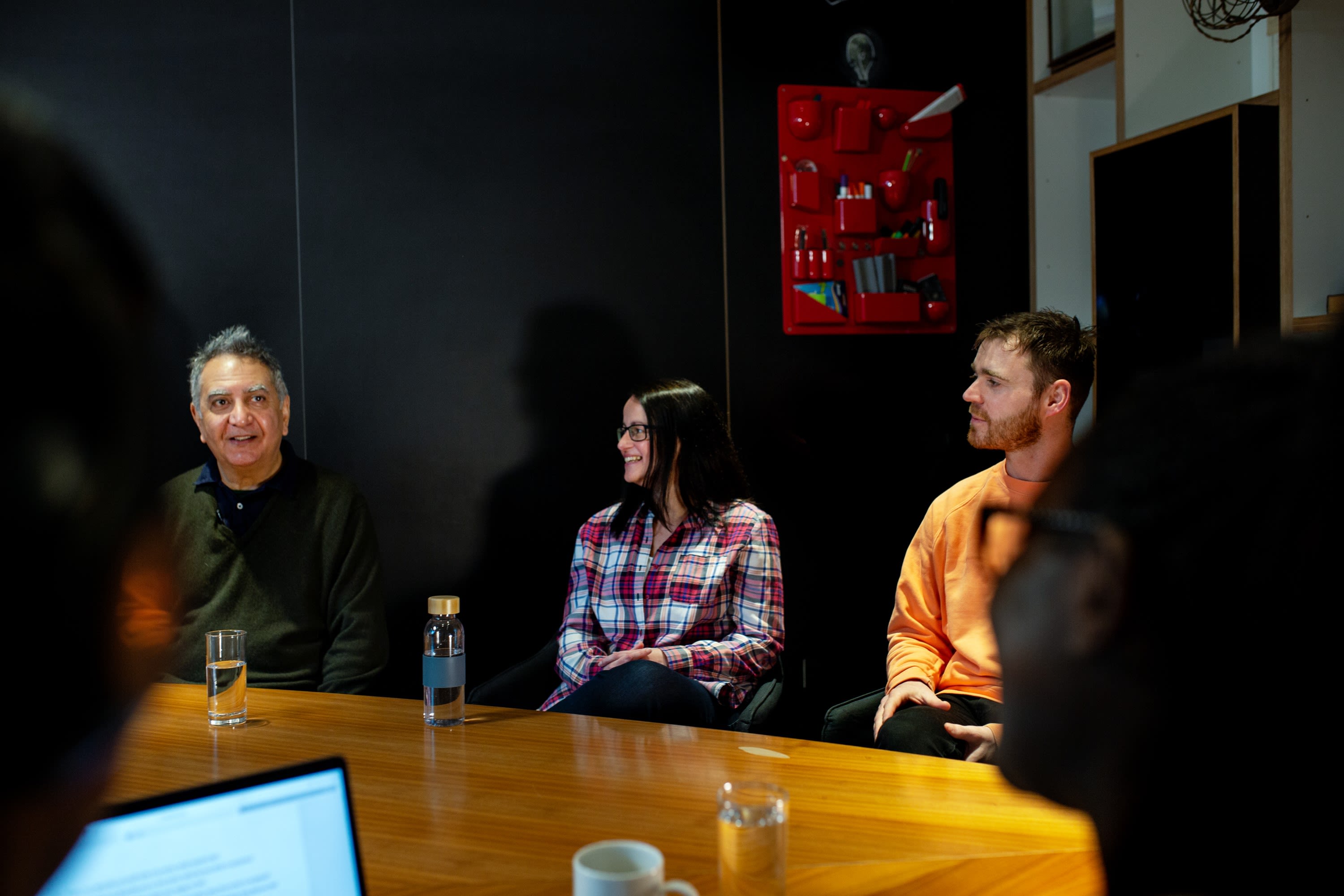
Scenes of the art workshops in Glasgow (Source: Drawing Together)
Scenes of the art workshops in Glasgow (Source: Drawing Together)
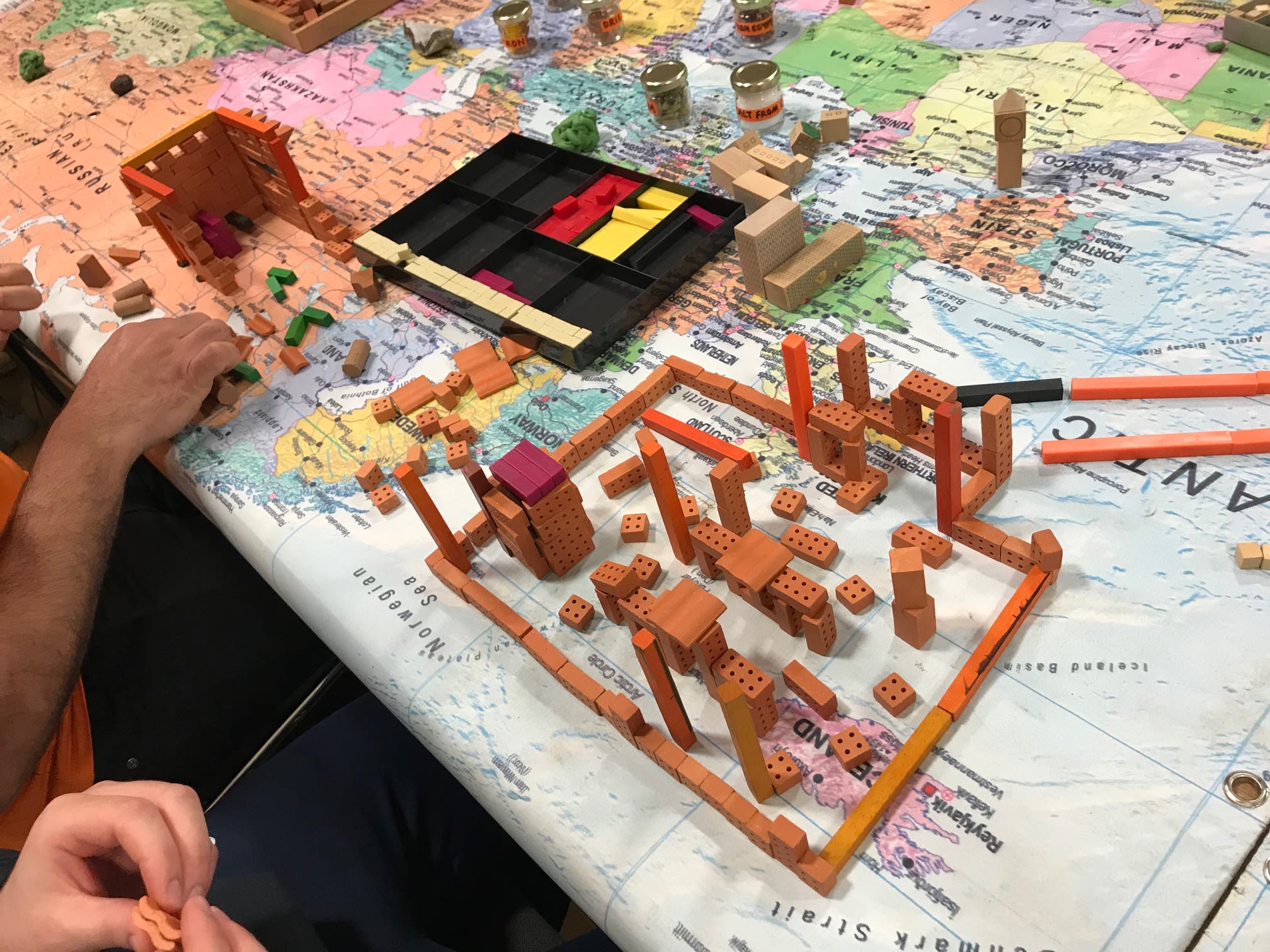
Scenes of the art workshops in Glasgow (Source: Drawing Together)
Scenes of the art workshops in Glasgow (Source: Drawing Together)
